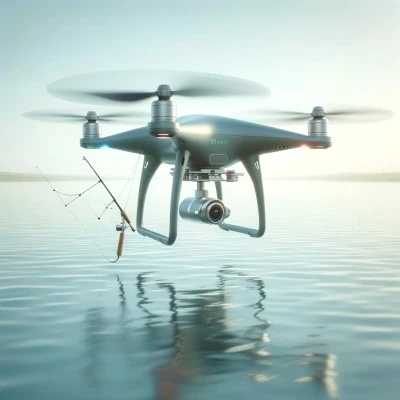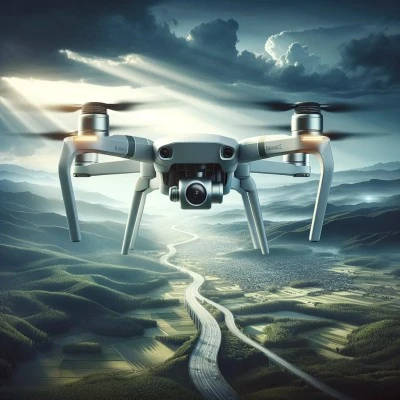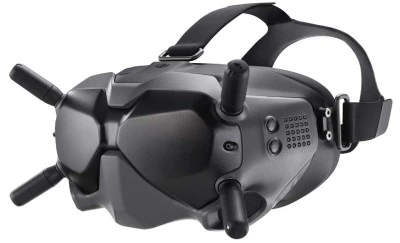Deciphering the Skies: A Comprehensive Guide to the Best Drone for Racing

The world of drone racing is a fast-paced and thrilling arena that blends high-speed technology with the skill of precision flying. As enthusiasts seek the ultimate flying experience, selecting the right drone becomes paramount. This article explores the top contenders in the market, examining their performance, durability, and features to guide you in finding the perfect drone to elevate your racing game.
I. Introduction
A. Overview of Drone Racing
Drone racing is a cutting-edge sport where pilots navigate quadcopters through 3D courses at high speeds. It’s not just a test of the drone’s capabilities but also the pilot’s skill and reflexes. Races are often viewed through first-person view (FPV) goggles, immersing the pilot in the action and making precision and split-second decision-making crucial. This high-octane sport has gained massive popularity, leading to professional leagues and a growing community of enthusiasts.
B. Importance of Selecting the Right Drone
Choosing the right racing drone is pivotal for any pilot looking to compete. A drone’s performance, durability, and the quality of its FPV system can make the difference between winning and losing. A good racing drone responds swiftly to controls, withstands inevitable crashes, and provides clear and stable video feedback. With the right machine, pilots can focus on honing their skills and strategies, knowing their drones can keep up with the pace.
II. Essential Features of Racing Drones
A. Speed and Agility
Speed is the heartbeat of drone racing. Racing drones are engineered for rapid acceleration and high top speeds. Agility, the ability to make sharp turns and navigate complex courses, is equally crucial. Drones with higher thrust-to-weight ratios and responsive control systems offer the skills needed to maneuver through challenging courses at breakneck speeds.
B. Durability and Build Quality
The intense nature of drone racing means crashes are inevitable. A racing drone must be robust enough to withstand impacts and continue flying. Durable materials like carbon fiber and reinforced plastics are commonly used in frames. Additionally, well-designed drones offer easy access to components for quick repairs and upgrades, ensuring pilots can get back to racing with minimal downtime.
C. Camera and FPV System
The FPV system is the pilot’s eyes during a race. A quality camera and transmitter are essential for clear, low-latency video feedback. Cameras should offer a wide dynamic range and good low-light performance, while transmitters need to provide reliable signal strength and multiple frequency options to avoid interference during races.
III. Top Contenders for the Best Drone for Racing
A. ARRIS X-Speed 280 V2 FPV Quadcopter Racing Drone RTF
- Performance and Speed
The ARRIS X-Speed 280 V2 is renowned for its exceptional performance. It’s equipped with powerful motors that deliver rapid acceleration and high top speeds, making it a favorite among seasoned racers. Agile handling allows pilots to navigate courses with precision and confidence. - Build Quality and Durability
The ARRIS X-Speed 280 V2 is built with robust materials and designed to last. Its sturdy frame can withstand the rigors of racing, and its modular design simplifies repairs. Pilots appreciate the drone’s resilience, knowing it can survive the occasional crash and keep flying. - User Reviews and Feedback
Pilots praise the ARRIS X-Speed 280 V2 for its out-of-the-box performance and reliability. Many commend its ease of use, making it suitable for both newcomers and experienced racers. The consistently positive feedback underlines the drone’s reputation as a top choice in the racing community.
B. EMAX Tinyhawk II Freestyle BNF FPV Racing Drone
- Performance and Speed
The EMAX Tinyhawk II Freestyle is a compact powerhouse that surprises pilots with its swift speeds and agile flight characteristics. Its high-speed capabilities and responsive control make it perfect for tight and intricate courses. - Build Quality and Durability
Despite its small size, the EMAX Tinyhawk II is remarkably durable. Its lightweight frame is resilient against crashes, and its components are easily accessible for maintenance. The drone’s build quality ensures it can take a beating and continue performing at its best. - User Reviews and Feedback
Users of the EMAX Tinyhawk II rave about its performance-to-size ratio. The drone’s portability, combined with its racing capabilities, makes it a popular choice for pilots who want a high-performing drone that’s easy to transport and ready to race at a moment’s notice.
C. Walkera Classical F210 3D Racing Quadcopter
- Performance and Speed
The Walkera Classical F210 3D stands out with its innovative design and powerful performance. It’s engineered for speed and agility, allowing pilots to push their limits and master complex maneuvers with ease. - Build Quality and Durability
Built with high-quality materials, the Walkera Classical F210 3D is tough and reliable. Its thoughtful design emphasizes durability and ease of repair, ensuring that pilots spend more time racing and less time on maintenance. - User Reviews and Feedback
Pilots commend the Walkera Classical F210 3D for its stable flight and robustness. It’s praised for delivering consistent performance and withstanding the demanding conditions of drone racing, making it a trusted companion for competitive pilots.
IV. Comparison and Analysis
A. Speed and Performance
While all three drones excel in speed and performance, each offers unique characteristics. The ARRIS X-Speed 280 V2 is known for its raw power and speed, the EMAX Tinyhawk II for its agility and compact form factor, and the Walkera Classical F210 3D for its innovative design and stable flight performance. Pilots must consider their racing style and preferences when choosing among these top contenders.
B. Camera and FPV System
A clear and stable FPV feed is crucial for racing success. All three drones offer high-quality cameras and reliable FPV systems, but differences in camera specifications and transmitter quality can influence a pilot’s experience. Factors like field of view, signal strength, and frequency options are essential considerations when comparing these drones.
C. Price and Value for Money
While performance is paramount, cost is also a significant factor. The ARRIS X-Speed 280 V2, EMAX Tinyhawk II, and Walkera Classical F210 3D cater to different budget ranges without compromising on quality. Pilots must weigh the features and capabilities of each drone against their price to determine which offers the best value for their specific needs.
V. FAQs
Q: What essential features should I look for in a racing drone?
A: Prioritize speed, agility, durability, and a high-quality FPV system for the best racing experience.
Q: How important is the camera quality in a racing drone?
A: Extremely important. A high-quality camera ensures clear and stable video feedback, which is crucial for FPV racing.
Q: Can I upgrade the components of my racing drone?
A: Yes, most racing drones are designed for easy upgrades and repairs, especially for components like motors and cameras.
Q: Is it necessary to build my drone for racing?
A: Not necessary, but building your drone allows customization for personal preferences in racing.
Q: How do I choose between RTF (Ready-to-Fly) and BNF (Bind-and-Fly) drones?
A: RTF drones are great for beginners, as they come fully assembled. BNF drones require a separate transmitter and are suitable for more experienced pilots.
Q: What’s the average battery life of a racing drone?
A: Battery life varies but generally lasts around 5-10 minutes, depending on the drone’s speed and agility.
Q: Are there any age restrictions for drone racing?
A: While there’s no set age limit, it’s important to handle drones responsibly and adhere to local regulations and safety guidelines.
VI. Conclusion
A. Best Offer
The ARRIS X-Speed 280 V2 stands out for its exceptional performance and durability, making it the top recommendation for serious drone racers.
B. The Alternative
The EMAX Tinyhawk II offers incredible agility and portability, perfect for racers who value speed and compact design.
VII. Suggested Readings
Before diving into the competitive world of drone racing, it’s important to arm yourself with knowledge. From understanding the mechanics of your drone to mastering flight techniques and even turning your passion into profit, there’s a wealth of information available. Enhance your understanding and skills with these carefully selected readings, each offering unique insights into the diverse aspects of drone technology and its applications.
- “DRONE / UAS Logbook: Flight, Repair and Maintenance Logs” – A comprehensive logbook designed for meticulous drone enthusiasts, ensuring you keep track of every flight, repair, and maintenance task.
- “DIY Drones for the Evil Genius: Design, Build, and Customize Your Drones” – Dive into the world of DIY drones with this guide, offering step-by-step instructions to design, build, and customize your drone, perfect for adding a personal touch to your racing experience.
- “Drones: The Essential UAV Pilot’s Collection: Two books in one, Drones: Mastering Flight Techniques and Drones: How to Make Money” – This collection combines critical flight techniques with insights on monetizing your drone skills, making it an invaluable resource for both hobbyists and aspiring professionals.
Whether you’re racing for fun or eyeing the podium, understanding the finer points of drone operation and maintenance is key to elevating your performance and enjoyment of this thrilling sport.





